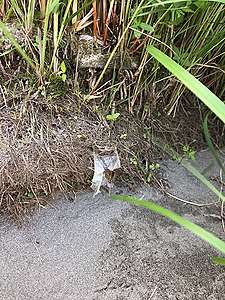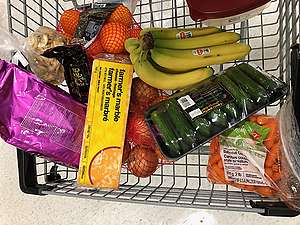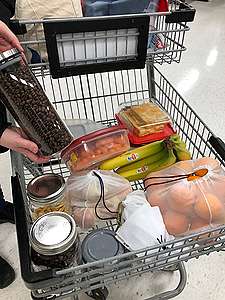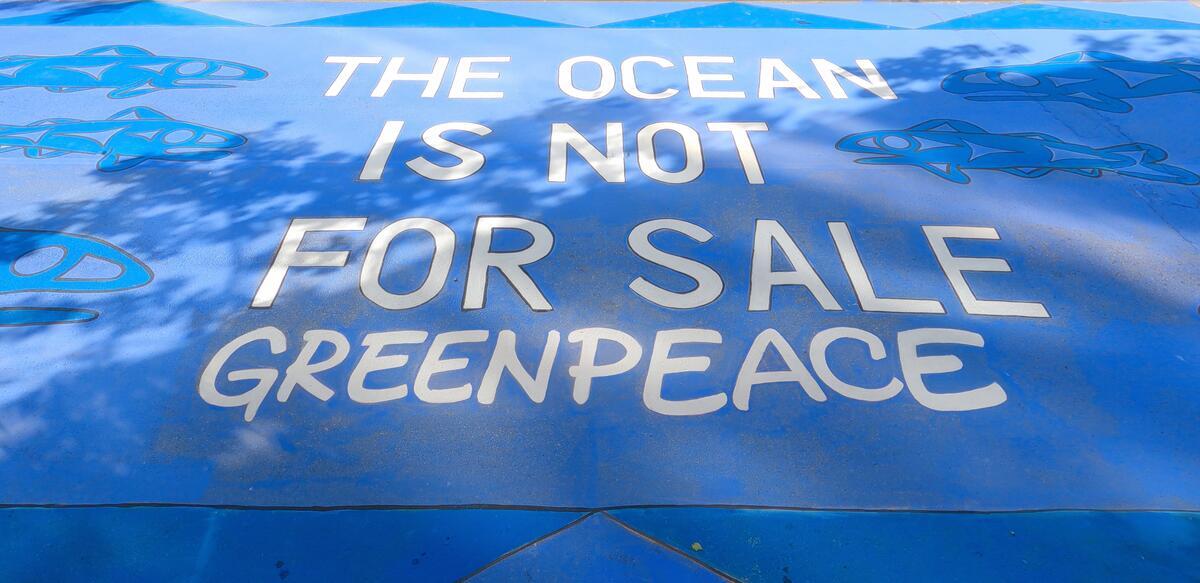How is it the end of (northern hemisphere) summer already?! I don’t know about you, but I am so not ready to give up patio lunches, say goodbye to the fresh farmer’s market summer produce, and hang up my swimsuit. The silver lining, other than how beautiful autumn landscapes are across Canada, is that the turn of the season is a great time to create new routines, set new intentions and look ahead. So, as we say goodbye to summer, why not also say goodbye to the plastic waste that will try to re-enter our lives through lunches, snacks and morning coffee rituals.
 If you visited a beach, were outside in nature or hanging in a community park over the last few months, chances are you came across plastic pollution. It’s hard not to, even in the seemingly cleanest cities. On my vacation home to the Maritimes, I did mini cleanups and brand audits that revealed a fair amount of plastic hidden in plain sight. And being out of my shopping and restaurant comfort zone reminded me how hard it is to avoid pointless plastic when eating out but especially when shopping at the big grocery chains.
If you visited a beach, were outside in nature or hanging in a community park over the last few months, chances are you came across plastic pollution. It’s hard not to, even in the seemingly cleanest cities. On my vacation home to the Maritimes, I did mini cleanups and brand audits that revealed a fair amount of plastic hidden in plain sight. And being out of my shopping and restaurant comfort zone reminded me how hard it is to avoid pointless plastic when eating out but especially when shopping at the big grocery chains.
Good gravy do the big supermarket chains like Sobeys wrap up produce and other goods like they’re bracing for a hurricane. As their customers, it can be beyond daunting to imagine making plastic-free choices when so much of the food, household and personal care products we seek, come in plastic. Then you add the stress of making kids’ snacks, lunches or your own to-go meals every day and it’s easy to reach for those pre-packaged items in an attempt to save time.
But fret not, we’re here to offer some tips on how to avoid plastic, and urge your supermarket to ditch it once and for all. First step – if you haven’t already, sign our petition urging Canada’s major supermarket chains to end the plastic packaging nightmare!
If you’ve been keen to reduce your own plastic consumption, packaged food is actually one of the easier places to start. Start by taking stock of all the food items that come in a plastic wrapper or container in your home. Crackers, granola bars, yoghurt, pre-cut veggies, cookies, juice boxes, other beverages, pasta, bread – the list could be endless. Now that that depressing exercise is complete, here’s how to get started on tackling it.
First, you need to create a collection of reusable containers. Old PB jars, empty hummus containers, storage containers, jam jars, old resealable bags, whatever’s on hand. As you get more into it, you may want to invest in some fit-for-purpose containers like the stainless steel options that are lightweight, come in various sizes, are durable, and don’t degrade over time like plastic ones. Glass is also a great, but a heavier option. There are so many choices these days for packing snacks, beverages and even hot  meals, once you start to look you’ll be pleasantly surprised by what’s available. A reusable water and coffee/tea travel mug is a must for all family members. Build your collection over time so as to not break the bank or load up unnecessarily.
meals, once you start to look you’ll be pleasantly surprised by what’s available. A reusable water and coffee/tea travel mug is a must for all family members. Build your collection over time so as to not break the bank or load up unnecessarily.
Second, think in bulk. Lots of stores have bulk sections where you can bring your own containers or bags and fill up on all kinds of tasty things like dried fruit, nuts, granola, cereal, chocolate chips, pasta, crackers and so much more. Instead of that plastic-wrapped granola bar, think a trail mix with the same ingredients, including chocolate chips for sweetness. Will your kids be unhappy? Maybe at first, but who doesn’t love little snacky packs!
Third, try making it yourself. While not everyone has the time or inclination to bake or cook tonnes of homemade snacks and foods, a simple internet search can show how easy some things can be, and many things can be frozen to be kept fresh if daily variety is a must. Or connect with a parent friend who wants to share food prep duties. So many folks are in the same boat!
Fourth, embrace the growing pains of the reduced plastic change. It might feel strange to bring your salad to work in a large mason jar, or your kids might groan when you send them off with containers of homemade applesauce instead of that brand they are used to, but over time these changes will become routine and you’ll see the reduction in plastic waste as proof of success.
Lastly and most importantly, channel your plastic frustration at those who can actually change your shopping experience – the decision-makers at your supermarket. It’s up to us to use our voice and use our dollar to keep up the momentum toward a plastic-free future. But it’s up to plastic producers and distributors to offer real solutions to use for product delivery. So tell them that! Here are three things you can do to urge plastic producers to give us healthier, more sustainable options.
- Sign our supermarket petition urging them to unpackage products, offer reusable packaging and make shopping in bulk or plastic-free easier in all ways as they transition to fully plastic-free aisles.
- On your next visit, tell your supermarket you want reusable packaging and unpackaged solutions. There is usually a customer service desk and do not hesitate to visit it or leave a written letter behind.
- Social media savvy? Take a picture of your packaging nightmare or branded plastic pollution and share on social media tagging the supermarket or company. Let them know it’s time they take responsibility and reduce their plastic footprint.



